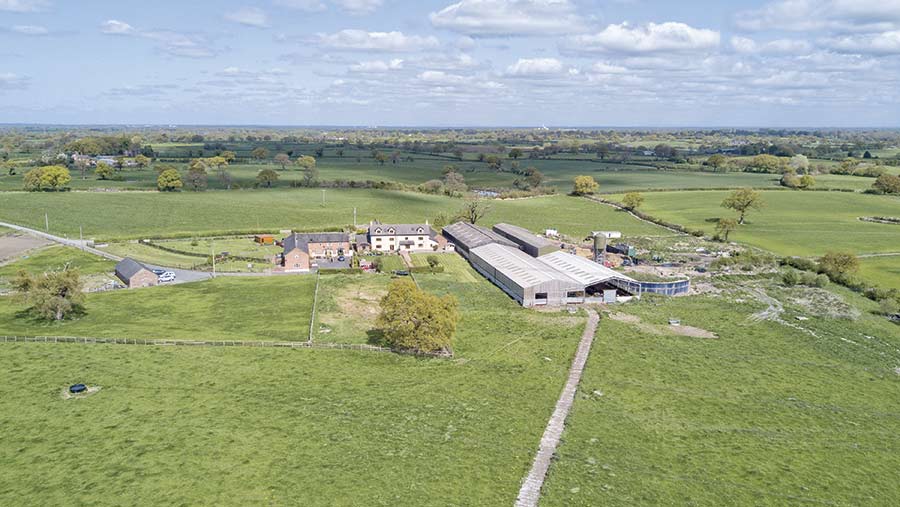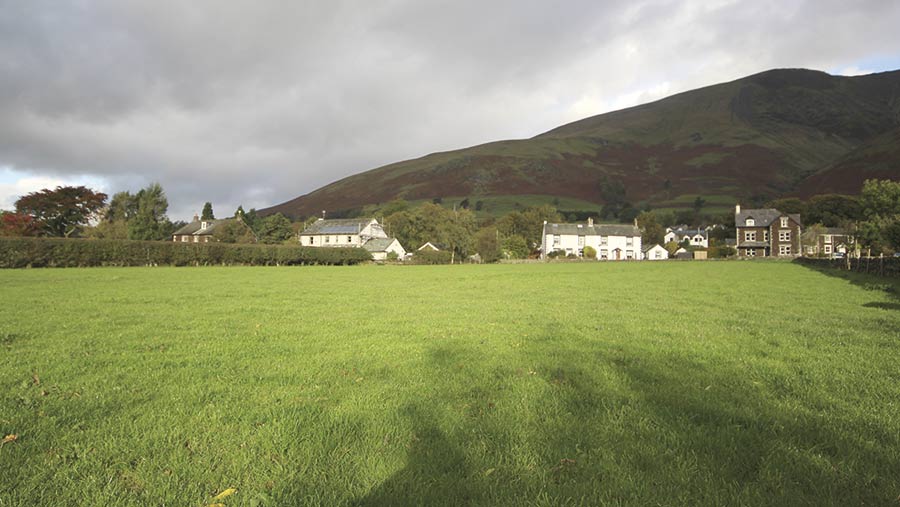The land market in your area: North-west England
Equipped farms have been the hardest to find in north west England over the past 12 months, but land has been moving and prices remain firm.
It remains a region of diverse landscapes and farm types, appealing to commercial farmers and amenity buyers alike, and small blocks which allow farmers to increase their productive capacity are in high demand.
See also: The land market in your area: Scotland
Early reports suggest a number of farms will appear on the open market and at auction this spring.
Still on the market

Bottoms Farm © Cloudbase Photography
Bottoms Farm between Crewe and Middlewich is a 150-cow commercial unit with 172 cubicles and 158 acres of quality grassland. On the market with Savills at a guide price of £1.6m, the farm has modern buildings, automatic scrapers and a three-bedroom house.
What sold well?

Threlkeld
Strong local demand for grazing land in Cumbria was emphasised with the sale of 32 acres at Threlkeld, near Keswick. H&H Land and Property had set the overall guide price for the five lots at £199,000 but in December it reached £423,000 at auction.
Looking back at the past 12 months
The region has followed the national trend of a decreasing amount of equipped farms for sale in 2017. Holdings that have come to the open market have sold well. However, location and quality of the soils, buildings and infrastructure play a huge part in determining the amount of interest and, ultimately, the prices being paid.
Property types in the region vary hugely and as a result, this attracts a wide range of buyers – probably the most diverse of any region in the UK.
The forthcoming changes in government support may affect the market for lowland holdings and hill farms in very different ways.
Will Parry, partner, Strutt & Parker
Looking to 2018 and beyond
We expect the strong demand seen in 2017 to continue. Prices have been steady and saw gradual improvement late last year.
The announcement on subsidies staying until 2024 have given farmers more confidence. The number of farmers is dropping, but those who are there are getting bigger and are looking to spread their fixed costs, so if they see something for sale on their doorstep, they’ll go for it.
We have three farms coming up this spring – all hill farms – so the early signs are that supply will be at about the same level as 2017.
Colin Tomlinson, director, H&H Land and Property
